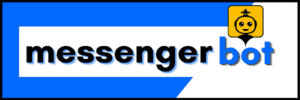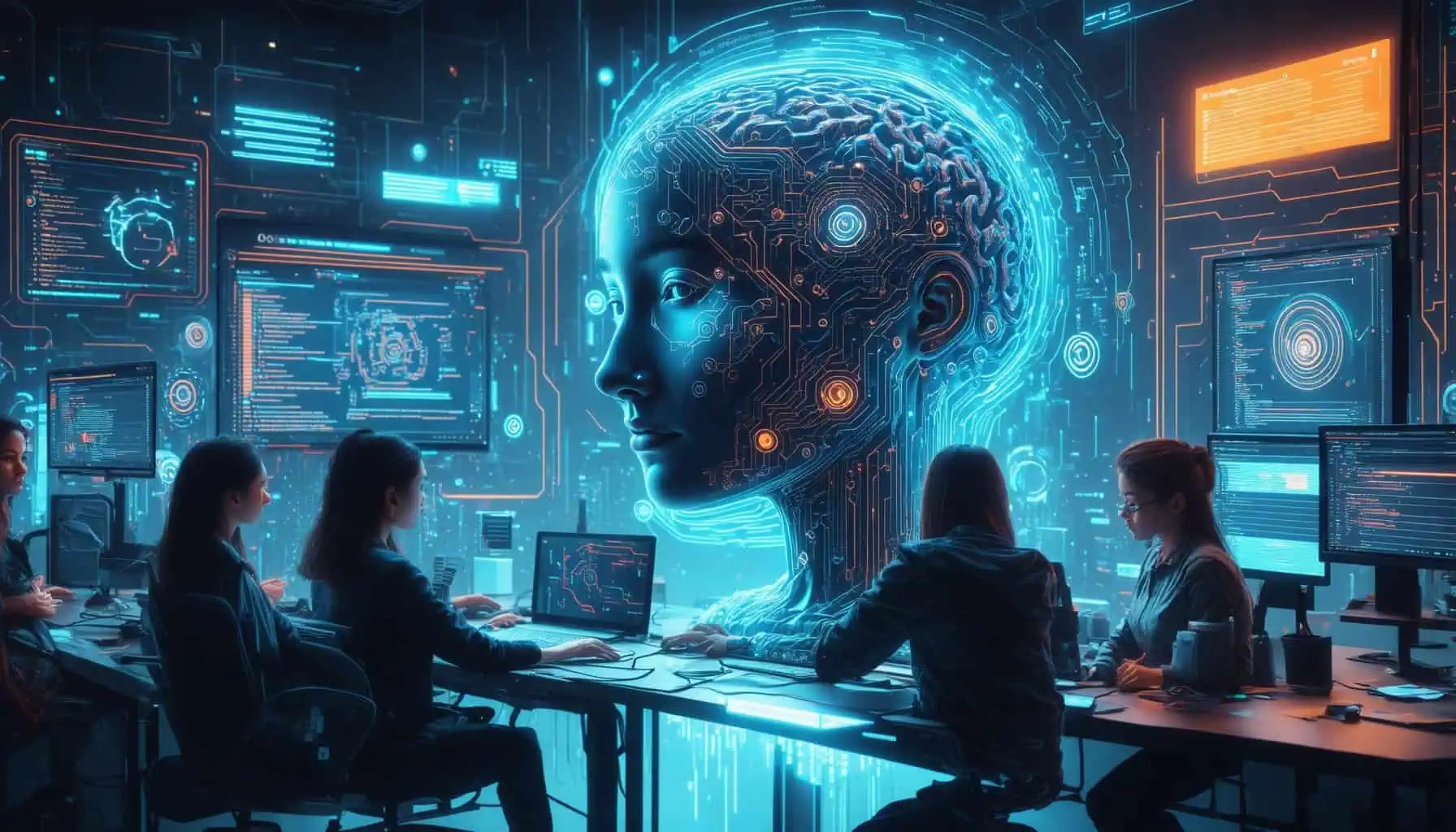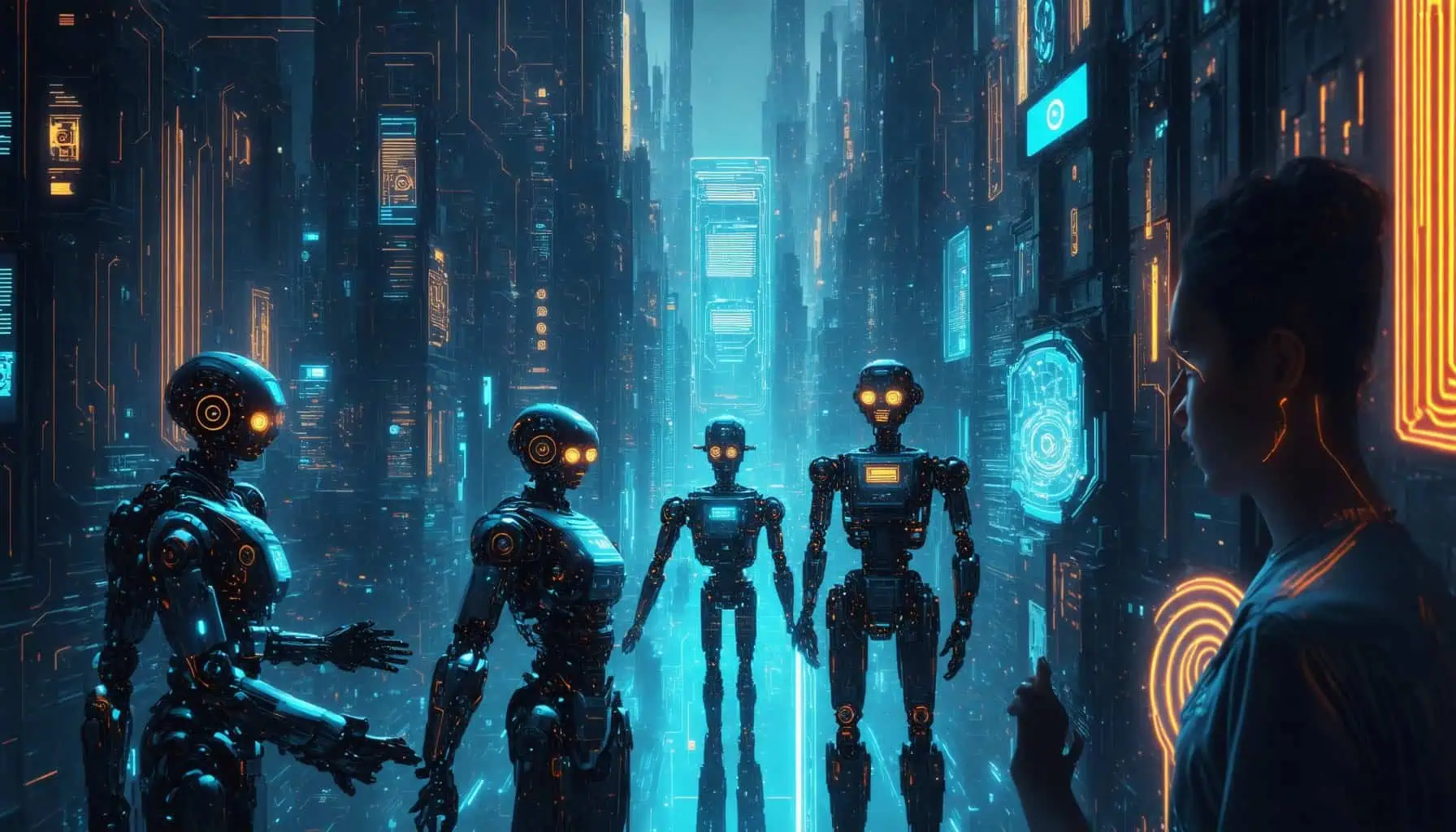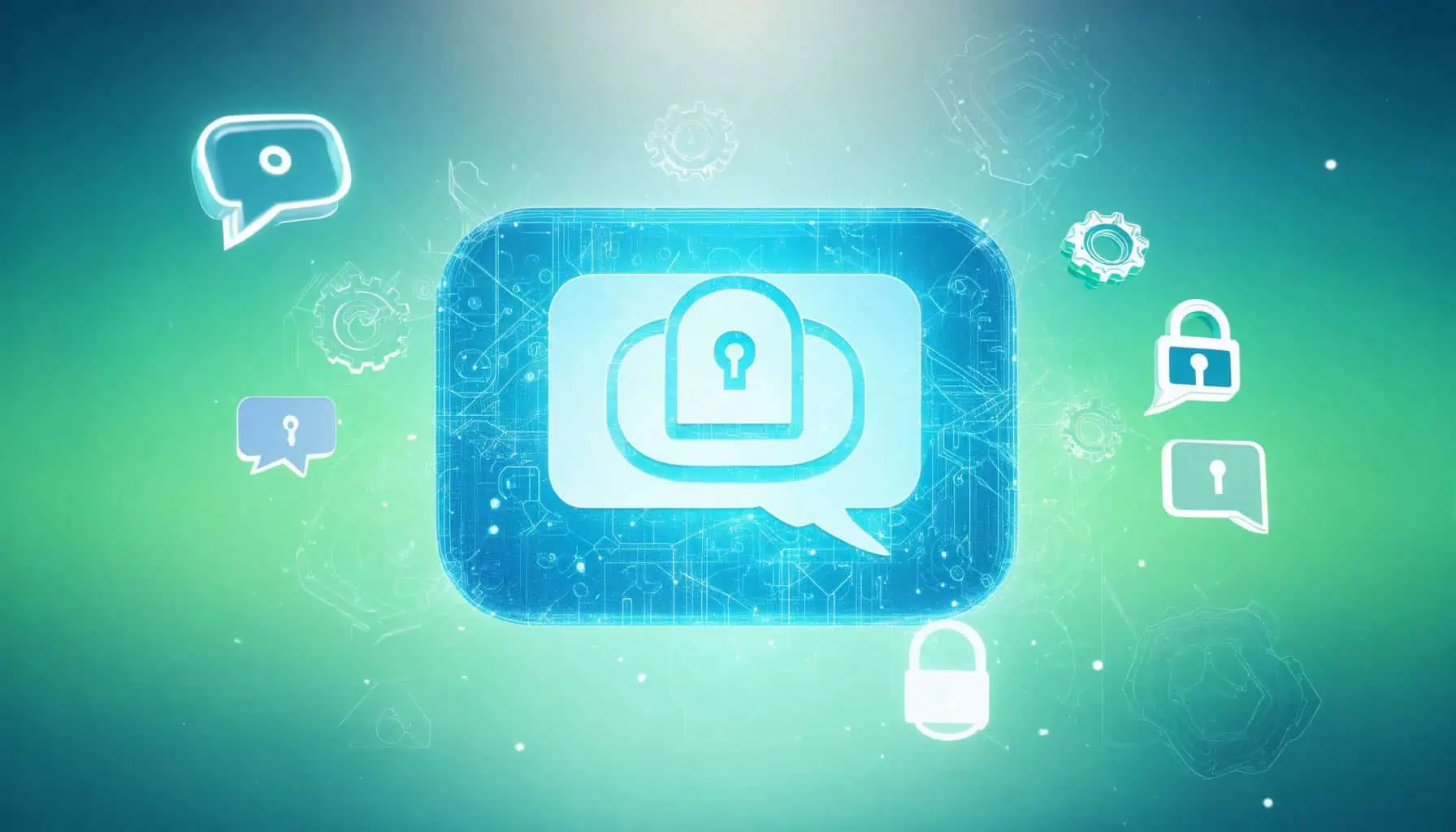Key Takeaways
- Master the fundamentals of AI bot development to create effective chatbots that enhance user engagement.
- Choose the right AI bot development platform, such as Dialogflow or Microsoft Bot Framework, based on your project needs.
- Understand the costs associated with AI chatbot development, which can range from $10,000 for basic bots to over $1 million for enterprise solutions.
- Focus on natural language processing (NLP) to enable your chatbot to understand and respond accurately to user queries.
- Continuous testing and iteration are key to improving your bot’s performance and user satisfaction.
- Stay informed about legal and ethical considerations in chatbot development to ensure compliance and positive user interactions.
- Invest in your skills and knowledge to become a proficient AI chatbot developer by leveraging online courses and practical experience.
Welcome to your ultimate guide on AI bot development, where we unravel the complexities of creating intelligent chatbots that can transform user interactions and streamline business processes. Whether you’re pondering, “Can I build my own AI bot?” or curious about the costs involved in AI chatbot development, this article is designed to provide you with comprehensive insights and actionable steps. We will explore the essential tools and platforms that facilitate AI bot development, delve into the skills required to become a proficient AI chatbot developer, and discuss the legal considerations surrounding chat bot development. Additionally, we’ll compare popular AI bot development platforms and guide you through the process of creating your own ChatGPT-like bot. Join us as we navigate the fascinating world of AI development and equip you with the knowledge needed to succeed in this rapidly evolving field.
Can I build my own AI bot?
Yes, you can build your own AI bot, and there are several approaches to do so depending on your technical expertise and the specific functionalities you want your bot to have. Here are key steps and considerations:
- Define the Purpose: Determine what you want your AI bot to accomplish. This could range from customer service automation to personal assistance or even entertainment.
- Choose a Development Platform: There are various platforms available for building AI bots, such as:
- Dialogflow: A Google-owned platform that allows you to create conversational interfaces.
- Microsoft Bot Framework: A comprehensive framework for building enterprise-grade bots.
- Rasa: An open-source framework for building contextual AI assistants.
- Programming Languages: Familiarize yourself with programming languages commonly used in AI development, such as Python, JavaScript, or Java. Python, in particular, has extensive libraries for machine learning and natural language processing, such as TensorFlow and NLTK.
- Natural Language Processing (NLP): Implement NLP capabilities to enable your bot to understand and respond to human language. Libraries like spaCy and Hugging Face’s Transformers can be beneficial.
- Integrate APIs: Use APIs to enhance your bot’s functionality. For instance, integrating with messaging platforms like Facebook Messenger can allow your bot to interact with users on social media.
- Testing and Iteration: After building your bot, conduct thorough testing to ensure it performs as expected. Gather user feedback and iterate on the design and functionality to improve user experience.
- Deployment: Once satisfied with the performance, deploy your bot on the desired platform, whether it be a website, mobile app, or social media channel.
- Continuous Learning: Implement machine learning techniques to allow your bot to learn from interactions and improve over time. This can be achieved through reinforcement learning or supervised learning methods.
For further reading and resources, consider the following authoritative sources: “Building Chatbots with Python” by Sumit Raj (O’Reilly Media), Google’s Dialogflow documentation, and Microsoft Bot Framework documentation.
Understanding AI Bot Development Basics
AI bot development is an exciting field that combines technology and creativity. To get started, it’s essential to grasp the foundational concepts of AI and how they apply to bot creation. Here are some basic principles:
- Machine Learning: This is a subset of AI that focuses on building systems that learn from data. Understanding machine learning algorithms is crucial for developing intelligent bots.
- Data Collection: Successful AI bots rely on quality data. Gathering and processing relevant data is vital for training your bot effectively.
- User Experience (UX): Designing a user-friendly interface is key to ensuring that users can interact with your bot seamlessly. Consider the flow of conversation and how users will engage with your bot.
By mastering these basics, you can lay a solid foundation for your AI bot development journey.
Key Considerations for DIY AI Bot Development
When embarking on your DIY AI bot development project, several key considerations can significantly impact the success of your bot:
- Technical Skills: Assess your technical skills and determine if you need to learn new programming languages or frameworks. Resources like AI chatbot development courses can be beneficial.
- Budget: Establish a budget for your project. Consider costs associated with development tools, hosting, and ongoing maintenance.
- Scalability: Plan for future growth. Ensure that your bot can handle increased user interactions and can be easily updated with new features.
- Compliance and Ethics: Be aware of legal considerations and ethical guidelines in AI development. This includes data privacy and ensuring your bot does not engage in harmful practices.
By keeping these considerations in mind, you can create a robust and effective AI bot that meets your needs and those of your users.

How are AI bots developed?
Understanding the intricacies of AI bot development is essential for anyone looking to create their own intelligent automation solutions. The process involves several critical steps that ensure the bot can effectively interact with users and provide valuable responses.
The AI Bot Development Process Explained
AI bots, particularly chatbots, are developed through a combination of advanced technologies including Artificial Intelligence (AI), Machine Learning (ML), Natural Language Understanding (NLU), Natural Language Processing (NLP), and Large Language Models (LLMs). The development process typically involves several key steps:
- Data Collection: AI chatbots are trained on extensive datasets that include conversational exchanges, text, and voice inputs. This data is crucial for teaching the bot how to understand and generate human-like responses.
- Model Training: Using ML algorithms, developers train the chatbot on the collected data. This training enables the bot to recognize patterns in language and context, allowing it to generate relevant responses. Techniques such as supervised learning, unsupervised learning, and reinforcement learning are often employed.
- Natural Language Processing (NLP): NLP techniques are applied to help the chatbot comprehend user inputs. This involves breaking down sentences into understandable components, identifying intent, and extracting relevant entities.
- Natural Language Understanding (NLU): NLU focuses on interpreting the meaning behind user queries. It helps the chatbot to understand nuances, context, and sentiment, which is essential for delivering accurate responses.
- Response Generation: Once the input is understood, the chatbot uses LLMs to generate responses. These models can create contextually appropriate replies that mimic human conversation, enhancing user engagement.
- Testing and Iteration: After initial development, the chatbot undergoes rigorous testing to identify areas for improvement. Feedback loops are established to refine the bot’s performance based on user interactions.
- Deployment and Monitoring: Once the chatbot is optimized, it is deployed on platforms such as websites, messaging apps, or customer service portals. Continuous monitoring is essential to ensure the bot adapts to new queries and maintains high performance.
Recent advancements in AI, such as the integration of transformer models, have significantly improved the capabilities of chatbots, enabling them to handle more complex interactions. For instance, the Messenger Bot utilizes these technologies to facilitate seamless conversations, demonstrating the practical applications of AI in real-world scenarios.
Essential AI Bot Development Tools and Software
To successfully navigate the AI bot development landscape, leveraging the right tools and software is crucial. Here are some essential AI bot development tools that can enhance your development process:
- Brain Pod AI: This platform offers a range of AI services, including chatbot development, and provides a demo to showcase its capabilities.
- Messenger Bot: Known for its user-friendly interface, it allows for easy integration and deployment of chatbots across various platforms.
- AI Chat Assistant: This tool focuses on enhancing user interactions through intelligent responses and workflow automation.
- AI Image Generation: For those looking to incorporate visual elements into their bots, this tool can generate images based on user inputs.
Utilizing these AI bot development platforms can streamline your development process and improve the overall functionality of your chatbot, ensuring it meets user needs effectively.
How to Become an AI Chatbot Developer?
To become an AI chatbot developer, you need to follow a structured path that combines education, practical skills, and experience in artificial intelligence and programming. Here are the key steps to guide you:
- Educational Background:
- Obtain a bachelor’s degree in computer science, software engineering, or a related field. This foundational knowledge is crucial for understanding algorithms, data structures, and software development principles.
- Consider pursuing a master’s degree or specialized certifications in artificial intelligence or machine learning to deepen your expertise.
- Programming Skills:
- Gain proficiency in programming languages commonly used in chatbot development, such as Python, JavaScript, and Java. Python is particularly favored for its extensive libraries and frameworks like TensorFlow and NLTK that facilitate AI development.
- Familiarize yourself with natural language processing (NLP) techniques, which are essential for enabling chatbots to understand and respond to human language effectively.
- AI and Machine Learning Knowledge:
- Develop a strong understanding of AI concepts, including machine learning algorithms, neural networks, and deep learning. Online courses from platforms like Coursera or edX can provide valuable insights and hands-on experience.
- Explore frameworks and tools such as Rasa, Dialogflow, or Microsoft Bot Framework, which are widely used for building intelligent chatbots.
- Practical Experience:
- Work on real-world projects, either through internships or personal projects, to apply your skills in developing chatbots. Building a portfolio showcasing your work can significantly enhance your employability.
- Engage in open-source projects or contribute to chatbot development communities to gain practical insights and network with other professionals in the field.
- Stay Updated with Industry Trends:
- Follow industry blogs, attend webinars, and participate in AI and chatbot development forums to keep abreast of the latest trends and technologies. Resources like the Association for the Advancement of Artificial Intelligence (AAAI) and the International Journal of Artificial Intelligence Research can provide valuable information.
- Soft Skills Development:
- Cultivate strong communication and problem-solving skills, as these are essential for collaborating with teams and understanding user needs when developing chatbots.
Recommended AI Development Courses and Resources
To enhance your journey in AI chatbot development, consider enrolling in specialized courses that cover essential topics and tools. Here are some recommended resources:
- AI Chat Assistant Features – Explore features that can enhance your chatbot’s capabilities.
- Messenger Bot Tutorials – Access tutorials that guide you through the development process.
- Brain Pod AI Chat Assistant – Learn about advanced AI chat assistants and their functionalities.
- AI Development Articles – Stay informed with articles that cover the latest trends in AI development.
How much is it to create an AI bot?
The cost of creating an AI chatbot can vary significantly based on several factors, including the complexity of the bot, the technology used, and the specific requirements of the business. Here’s a breakdown of the estimated costs for developing AI chatbots in 2025:
- Basic Rule-Based Chatbots: These are the simplest forms of chatbots that follow predefined rules and scripts. The development cost for these systems typically starts at around $10,000. They are suitable for straightforward tasks such as FAQs and basic customer service inquiries.
- Advanced AI Chatbots: For more sophisticated bots that utilize natural language processing (NLP) and machine learning, costs can range from $50,000 to $300,000. These chatbots can understand context, learn from interactions, and provide personalized responses, making them ideal for businesses looking to enhance customer engagement.
- Enterprise-Level Solutions: Custom-built AI solutions designed for large organizations can exceed $1 million. These bots often integrate with existing systems, handle complex queries, and provide analytics and reporting features. They are tailored to meet the specific needs of the enterprise, ensuring scalability and security.
- Ongoing Maintenance and Updates: It’s essential to consider the ongoing costs associated with maintaining and updating the chatbot. This can range from $1,000 to $10,000 annually, depending on the complexity and usage of the bot.
- Messenger Bots: If you are considering integrating a chatbot with platforms like Facebook Messenger, additional costs may apply for platform-specific development and compliance with guidelines. This can add anywhere from $5,000 to $20,000 to the overall budget, depending on the features required.
In conclusion, the total investment for creating an AI chatbot can vary widely based on the desired functionality and the scale of implementation. Businesses should carefully assess their needs and budget to determine the most suitable solution. For more detailed insights, refer to industry reports and studies from sources like Crescendo.ai and Gartner.
Factors Influencing AI Bot Development Costs
Several factors can influence the overall costs associated with AI bot development:
- Complexity of the Bot: The more complex the bot’s functionality, the higher the development costs. Advanced features such as machine learning capabilities and integration with third-party services can significantly increase expenses.
- Technology Stack: The choice of technology and development tools can impact costs. Utilizing established AI bot development tools can streamline the process and reduce expenses.
- Customization Requirements: Custom solutions tailored to specific business needs often require more resources and time, leading to higher costs.
- Development Team Expertise: Hiring experienced developers or partnering with an AI chatbot development company can affect pricing. Companies with a proven track record may charge a premium for their services.
- Maintenance and Support: Ongoing support and updates are crucial for the longevity of the bot. Budgeting for these services is essential to ensure optimal performance.
Conclusion
Understanding the costs associated with AI bot development is crucial for businesses looking to implement these technologies. By considering the factors outlined above, you can make informed decisions that align with your budget and operational goals. For more information on setting up your first AI chatbot, check out our tutorial.

Is Making Bots Illegal?
The legality of creating bots largely depends on their intended use and the jurisdiction in which they operate. While bots can serve beneficial purposes, such as automating customer service or enhancing user engagement, they can also be employed for malicious activities, including ad fraud, data scraping, and spamming.
Legal Considerations in AI Bot Development
1. Legislation and Regulations: Various countries have implemented laws to regulate bot usage. For instance, the U.S. has the Computer Fraud and Abuse Act (CFAA), which prohibits unauthorized access to computer systems, including the use of bots for malicious purposes. The European Union’s General Data Protection Regulation (GDPR) also imposes strict rules on data collection and processing, which can affect how bots operate, particularly those that gather personal information.
2. Fraud Prevention: Many jurisdictions have enacted specific laws targeting the use of bots in digital advertising. The Bot Disclosure Act in the U.S. requires companies to disclose when bots are used to generate content or interact with users, aiming to promote transparency and combat ad fraud.
Ethical Guidelines for AI Chatbot Development
1. Ethical Considerations: Beyond legality, ethical considerations play a significant role in bot creation. Bots that mislead users or manipulate online interactions can damage trust and lead to legal repercussions. Developers are encouraged to adhere to ethical guidelines and best practices to ensure their bots contribute positively to the digital ecosystem.
2. Examples of Legal Bots: Bots that comply with regulations, such as customer service bots or those used for legitimate data analysis, are generally legal. For example, Messenger Bots, which facilitate communication on platforms like Facebook, are permissible as long as they respect user privacy and comply with platform policies.
In summary, while creating bots is not inherently illegal, their legality hinges on their purpose and adherence to applicable laws. Developers must navigate a complex landscape of regulations to ensure compliance and ethical usage. For further reading, consult resources from the Electronic Frontier Foundation (EFF) and the International Association of Privacy Professionals (IAPP) for comprehensive insights into bot legality and ethical considerations.
Can I make my own ChatGPT?
Yes, you can create your own version of ChatGPT by utilizing various tools and platforms that allow for the development of AI chatbots. Here are the key steps to consider:
- Choose a Framework: Select a machine learning framework that supports natural language processing (NLP). Popular options include TensorFlow, PyTorch, and Hugging Face’s Transformers library. These frameworks provide pre-trained models that can be fine-tuned for specific tasks.
- Access Pre-trained Models: Leverage existing models like OpenAI’s GPT-3 or GPT-4 through their API. This allows you to build a chatbot without starting from scratch. You can customize the model’s behavior by fine-tuning it on your specific dataset.
- Data Collection: Gather a dataset relevant to the domain you want your chatbot to operate in. This could include conversation logs, FAQs, or any textual data that reflects the type of interactions you expect.
- Fine-tuning: Use your collected data to fine-tune the pre-trained model. This process adjusts the model’s parameters to better respond to the specific context of your application.
- Deployment: Once your model is trained, you can deploy it using cloud services like AWS, Google Cloud, or Microsoft Azure. These platforms offer scalable solutions to host your chatbot and manage user interactions.
- Integration: If desired, integrate your chatbot with messaging platforms such as Facebook Messenger, Slack, or WhatsApp. This can enhance user engagement and accessibility.
- Continuous Improvement: Monitor user interactions and feedback to continually improve your chatbot’s performance. Implementing machine learning techniques can help adapt the model over time.
For more detailed guidance, consider reviewing resources from OpenAI, Hugging Face, and academic papers on chatbot development. These sources provide valuable insights into the latest methodologies and best practices in AI and NLP.
Utilizing the Microsoft Bot Framework for ChatGPT Development
The Microsoft Bot Framework is an excellent choice for developing your own ChatGPT-like AI bot. It offers a comprehensive set of tools and services that simplify the AI bot development process. Here’s how to leverage it:
- Framework Setup: Start by setting up the Microsoft Bot Framework SDK, which provides the necessary libraries and tools for building chatbots.
- Bot Registration: Register your bot with the Azure Bot Service, which allows you to manage your bot’s settings and deploy it to various channels.
- Development Tools: Utilize the Bot Framework Emulator for local testing and debugging. This tool helps you simulate conversations and refine your bot’s responses.
- Integration with Azure Services: Enhance your bot’s capabilities by integrating it with Azure Cognitive Services, which can provide advanced features like language understanding and speech recognition.
- Deployment: Deploy your bot to Azure, ensuring it can scale and handle user interactions efficiently.
- Analytics and Monitoring: Use Azure Application Insights to monitor your bot’s performance and gather user interaction data for continuous improvement.
By utilizing the Microsoft Bot Framework, you can streamline your AI chatbot development process and create a robust, engaging ChatGPT-like experience for your users.
Exploring AI Bot Development Platforms
When diving into AI bot development, selecting the right platform is crucial for success. Various AI bot development platforms offer unique features and capabilities that cater to different business needs. Understanding these platforms can help streamline the development process and enhance the functionality of your AI bots.
Overview of Popular AI Bot Development Platforms
Several platforms stand out in the realm of AI chatbot development. Here are some of the most notable:
- Dialogflow: A Google-owned platform that excels in natural language processing (NLP), making it ideal for creating conversational interfaces.
- Microsoft Bot Framework: This comprehensive framework allows developers to build, test, and deploy bots across multiple channels, including web and mobile applications.
- IBM Watson Assistant: Known for its powerful AI capabilities, Watson Assistant provides tools for building sophisticated chatbots that can understand and respond to user queries effectively.
- Brain Pod AI: Offers a versatile AI chat assistant that can be integrated into various platforms, enhancing user engagement through intelligent automation.
Each of these platforms provides distinct advantages, depending on your specific requirements and technical expertise. For instance, if you are looking for a user-friendly interface with robust support, platforms like Brain Pod AI may be particularly beneficial.
Comparing Azure AI Bot Service with Other Development Tools
The Azure AI Bot Service is a leading choice among AI bot development companies due to its scalability and integration capabilities. Here’s how it compares to other tools:
- Scalability: Azure’s cloud infrastructure allows for seamless scaling as your bot’s user base grows, unlike some smaller platforms that may struggle under increased demand.
- Integration: Azure integrates well with other Microsoft services, providing a comprehensive ecosystem for businesses already using Microsoft products.
- Cost: While Azure offers robust features, it may come at a higher price point compared to platforms like Dialogflow, which can be more cost-effective for startups.
- Ease of Use: Platforms like Brain Pod AI focus on user-friendly interfaces, making them accessible for those without extensive technical backgrounds.
Ultimately, the choice of platform will depend on your specific needs, budget, and the level of technical expertise available within your team. Exploring these options thoroughly will ensure you select the best AI bot development platform for your project.




